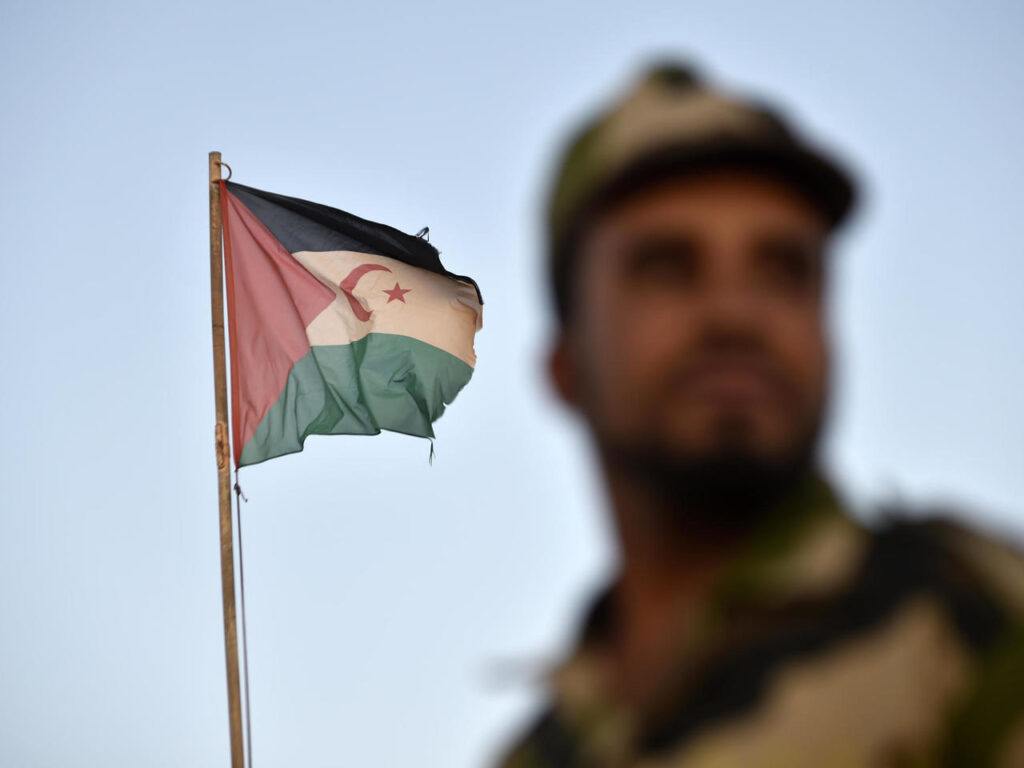Morocco’s reported use of a drone strike to kill a senior Western Sahara independence fighter would, if confirmed, mark a turning point in the decades-long conflict, experts say.
The Polisario Front announced on Wednesday that its police chief Addah al-Bendir had been killed “on the field of honor” in a separatist-controlled part of the disputed desert territory.
A Polisario official later told AFP that Bendir had been killed by a Moroccan drone after taking part in a military operation near a sand barrier separating Moroccan and Polisario-controlled zones.
The location and circumstances of his death are murky, and the North African kingdom has not released any details. But Moroccan and Algerian press outlets have carried reports that a drone was involved.
Moroccan military expert Abdelhamid Harifi told AFP that “officially, Morocco doesn’t have armed drones — but it has a whole range of state-of-the-art unarmed drones.”
The kingdom has been “a regional pioneer in using drones for intelligence and to identify targets,” he added. “It’s possible that the army used such a drone to pinpoint suspect movement in the buffer zone.”
Bendir’s death comes after decades of simmering tension between Morocco and the Polisario rose sharply in November after Rabat deployed the army to reopen the kingdom’s only highway into West Africa.
The Polisario, which has long demanded a referendum on an independent state, had blocked the highway arguing that it was built in violation of a 1991 truce deal.
The Polisario has since announced daily attacks against Morocco, which controls most of the former Spanish colony and has offered autonomy under its own administration, though claims are difficult to independently verify in the hard-to-access area.
‘Hard to Prove’
Moroccan military expert Mohamed Chiker said the nature of the operation targeting Bendir, a lethal strike beyond the sand barrier, was unprecedented since a 1991 UN-backed ceasefire. But he said it was “hard to prove” that a drone had been used.
The Sahrawi defense ministry said Bendir had fallen in Tifariti, a part of Western Sahara under Polisario control, after a “military mission.” That statement, released through official news agency SPS, was later removed without explanation.
Several media outlets said the Polisario had attacked inside Morocco, in the region of Touizgui near the Algerian border.
That would mean that “Algeria is allowing Polisario soldiers to enter Morocco from Algerian territory,” warned the semi-official Moroccan news site Le 360.
Moroccan news site Le Desk reported that Bendir had been killed in a “joint mission by an unarmed (French-Israeli) Harfang drone” that located the target, allowing a fighter jet to carry out the strike.
The use of a drone “would mean that Morocco is starting targeted strikes like the United States and Israel in retaliation to the Polisario’s attempted incursions,” it said.
‘In Military Control’
In neighboring Algeria, news site Algerie Patriotique pointed to the use of “killer drones” with “technical assistance” from Israel.
The Moroccan press reported late last year that the kingdom had taken delivery of three Harfang drones, as well as ordering Israeli Bluebirds and American MQ-9B SkyGuardians — which do not appear to have been delivered yet.
Washington in December recognized Morocco’s sovereignty over Western Sahara, in exchange for Rabat normalizing ties with Israel.
The kingdom’s growing capabilities had already raised it from 60th to 53rd place on the Global Firepower Index, ranking military strength.
The Polisario, for its part, has “an arsenal that has barely changed since the 1980s, and whose modernization is totally dependent on its Algerian protector,” Jeune Afrique reported in November.
Whether a drone was used in the killing of Bendir remains an open question for now.
But Chiker said that either way, the killing was a demonstration that Morocco “is in military control of the entire (Western) Sahara, and has an arsenal capable of striking” the Polisario anywhere in the territory.



